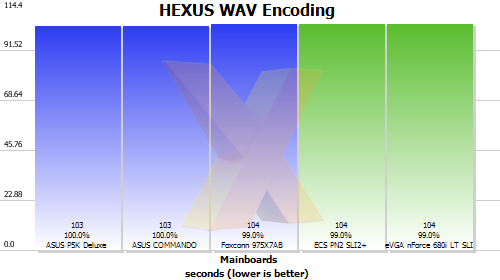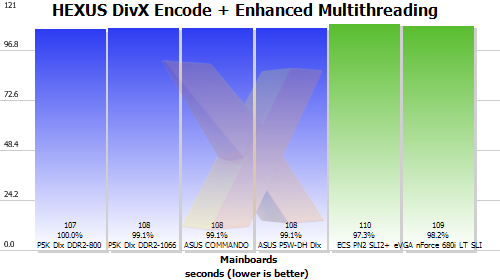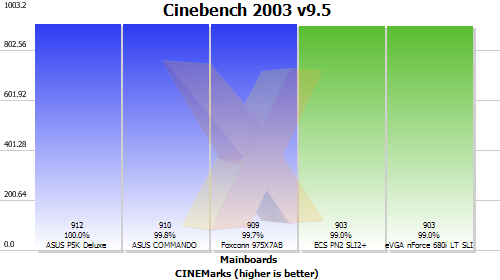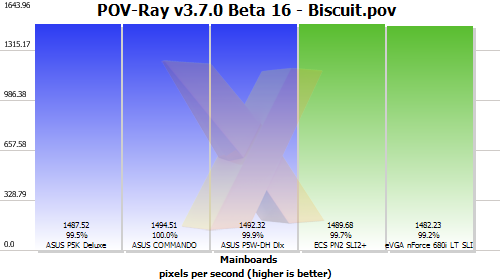Multi-threaded performance




Summary
Again all five boards and chipsets show minimal variance, with all the multi-threaded performance tests coming within 2 per cent of each other.
The use of DDR2-1066 in the DivX encoding test actually saw a slight increase in the time taken to complete the test, further emphasising the fact that the 1066FSB is insufficient to take advantage of higher speed memories.


